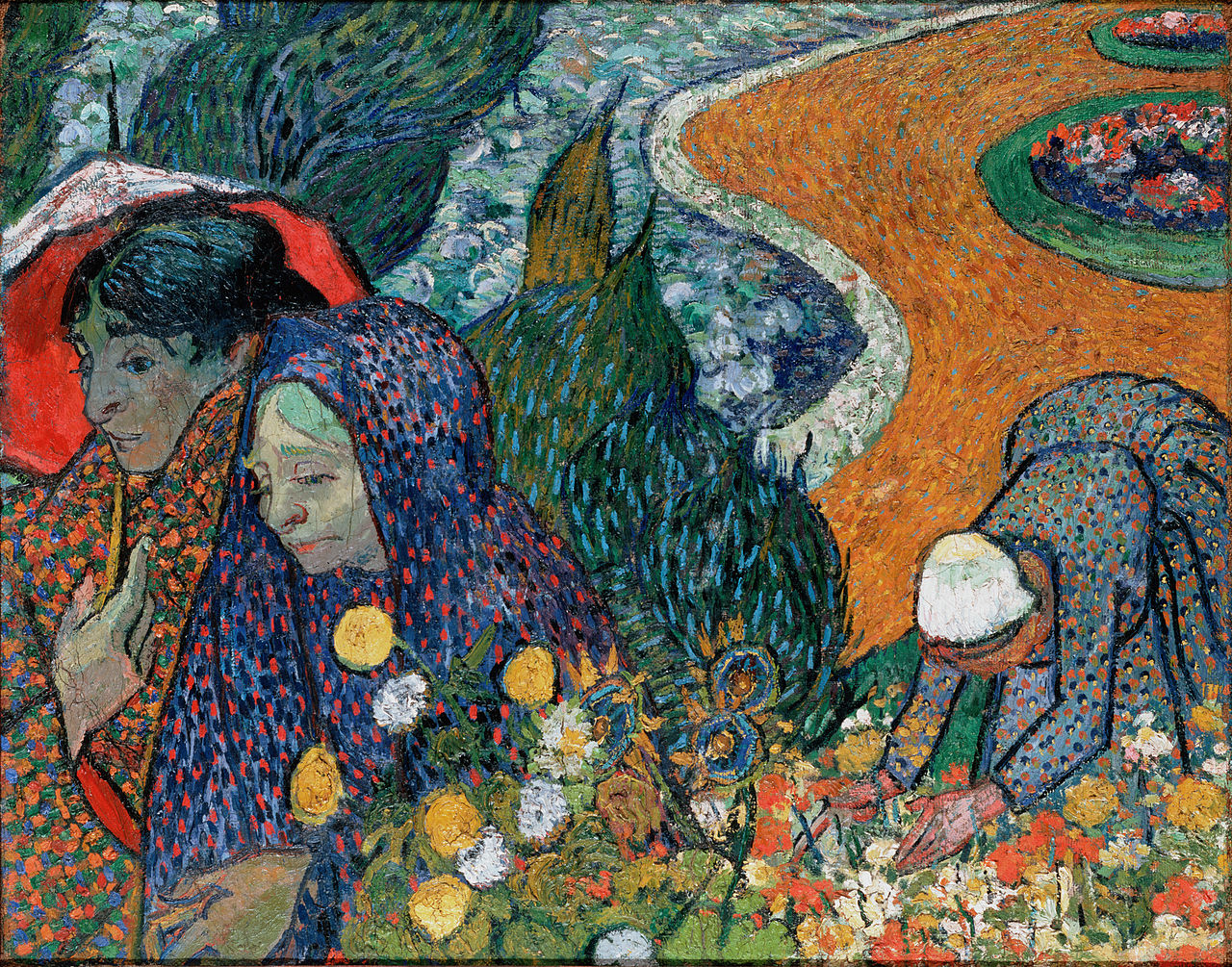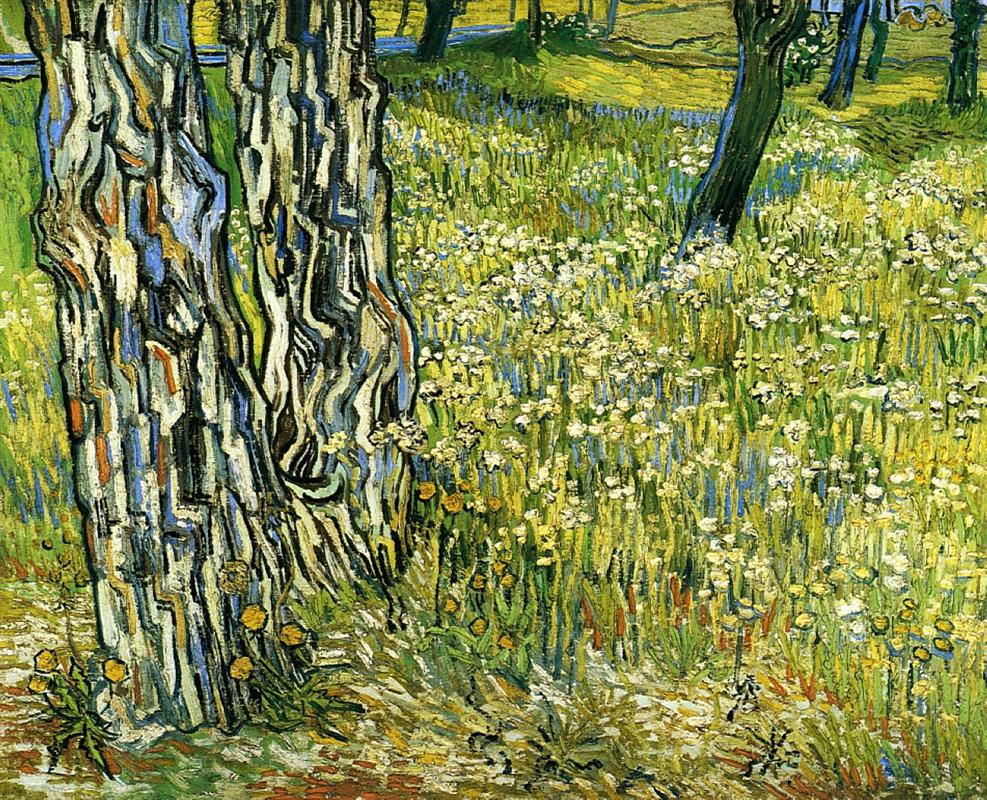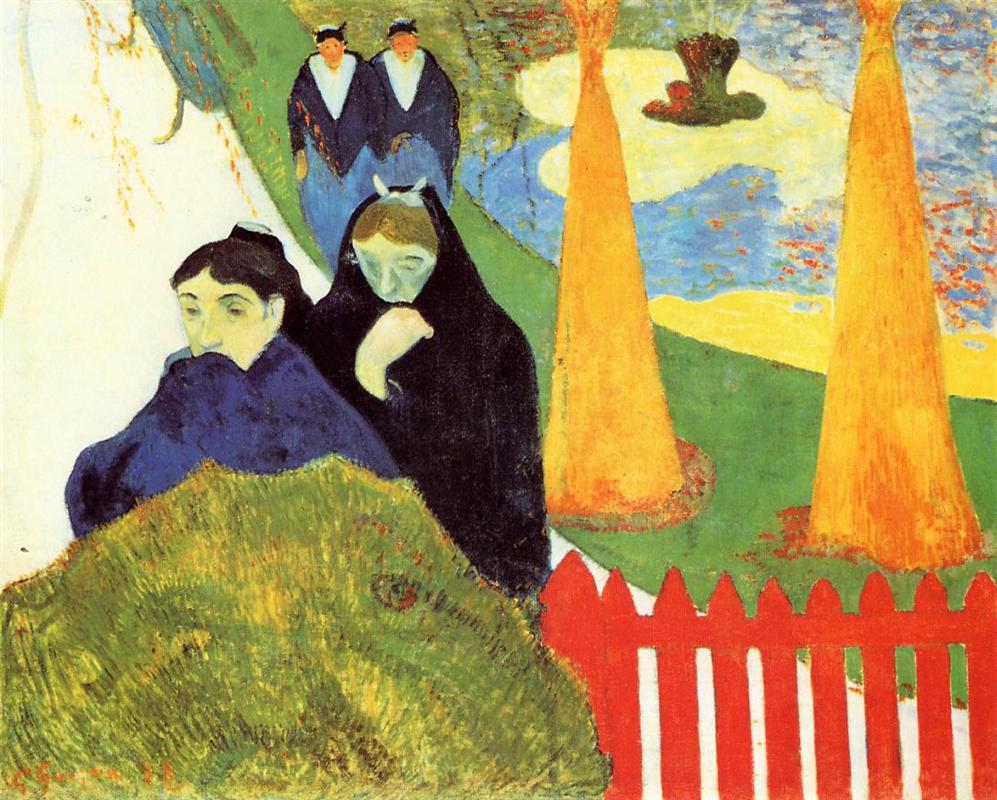
Last week, we talked about how to see like Claude Monet — that was an easy one: to begin with, his was an insight that, once found, is easy to share; and, probably more importantly, seeing like Monet is a mental skill that, once learned, tends to fill one’s life with joy. In a very palpable sense, it makes you a happier person (not unlike meditation practice). That’s why he created this movement that’s still alive today: you won’t find too many post-impressionists or cubists working today, and — more to the point for today’s topic — hardly any “cloissonnists”, but there are many a painter working today associate their work with impressionism.
Vincent van Gogh’s is an entirely different story. No easily shareable insights, no trainable skills to acquire. In a sense, one just cannot learn to see like van Gogh; and to the extent you can, it is very unlikely to make you happier. More intense, more compassionate — perhaps, but hardly happier. And if he can be said to have had any followers in the history of painting, they departed from any representation of visible world altogether. I know why: many, many years ago I stopped painting because there was just no point in painting after van Gogh. I distinctly remember the moment of this decision, which had defined my life for the following twenty years at least: I was standing in a doorway to my room in my childhood home and taking in, for a millionth time, a reproduction of his blue tree trunks on the wall.

I was overwhelmed by a confusing mixture of admiration and despair, love and pain; it was the beautiful, irresistible path I felt I had to follow, but could not, not even close. It was like to be or not to be, which, at that moment, was resolving itself into not to be — to stop what I had, by then, come to see as my life, to make my quietus — not with a bare bodkin, but by abandoning my childhood dream. This is the memory that his “Memory of the Garden at Etten (Ladies of Arles)” keeps bringing back to my mind.
What is the mystery of van Gogh’s sense of vision? I believe the closest anyone had come to expressing it in prose was Rainer Maria Rilke, in a letter to his wife (June 24, 1907; published in “Letters on Cézanne”):
“<…> works of art are always the result of one’s having been in danger, of having gone through an experience all the way to the end, to where no one can go any further. The further one goes, the more private, the more personal, the more singular an experience becomes, and the thing one is making is, finally, the necessary, irrepressible, and, as nearly as possible, definitive utterance of this singularity …”
Except for van Gogh, it was — almost always — a direct visual experience. He could see all the way to the end, to the point where a visual motif becomes personal, singular, and irrepressible, to where there is no difference between the outside and the inside; I believe this was (or it had gradually become) an immanent part of his sense of vision. And it is not a skill one can learn: it’s a new danger, new risk, new void every single time. No wonder Rilke’s train of thought — begun as a contemplation on art in general (and based, doubtlessly, on his own experience) — lead him to van Gogh. He writes in the same letter:
“I often think to myself what madness it would have been for van Gogh, and how destructive, if he had been forced to share the singularity of his vision with someone, to have someone join him in looking at his motifs before he had made his pictures out of them, these existences that justify him with all their being, that vouch for him, invoke his reality. He did seem to feel sometimes that he needed to do this in letters (although there, too, he’s usually talking of finished work), but no sooner did Gauguin, the comrade he’d longed for, the kindred spirit, arrive than he had to cut off his ear in despair, after they had both determined to hate one another and at the first opportunity get rid of each other for good.”
I said “almost always” just now, because this painting, “Memory of the Garden at Etten (Ladies of Arles)”, is, in a sense, an exception: not a single visual experience, but its explicit, conscious merger with the memory of another one. This painting is a response to his attempt to open himself to Paul Gauguin’s influence, during their nine-weeks sojourn in Arles — something that happened within Rilke’s “no sooner”. Here is what van Gogh wrote to his sister about this painting:
“I do not know if you can understand that it is possible to express poetry by means of a good arrangement of colours and nothing more, just as one can express consolation by means of music. In addition, the bizarre, contrived and repetitive lines that twist through the whole picture are not meant to represent the garden as it normally looks, but to render it as we might see it in a dream, in its true character, yet at the same time stranger than in reality.”
For all we know, this intentional distance from what how things “normally look” is a result of his attempt to follow Gauguin’s concept of painting as an abstraction from nature, simplified and formalised, subordinated to a two-dimensional visual idea designed by the artist (rather than borrowed from visible reality). Living as they were in the midst of an earth-shattering change in painting, they all seem to have been obsessed with finding the one true path for it, and Gauguin had just participated in launching a new movement, called “cloisonnism”. And van Gogh didn’t just (in Rilke’s words) “share the singularity of his vision” with Gauguin, he almost completely opened himself to Gauguin’s influence, trying to absorb this new approach to painting. Almost, but not quite. Ingo F. Walther and Rainer Metzger write in “Vincent van Gogh. The complete paintings”:
“Paul Gauguin, after giving the matter careful thought, had evolved a ethos of making painting independent of the obsessions, spontaneous reactions and passing moods of the artist, and Vincent van Gogh, appropriating the method, used it for his own immature purposes, his own self-admiring ends, his need for intense dedication!”
Incidentally, isn’t it strange that, while writing a book on van Gogh, they seem to identify completely with Gauguin’s point of view? One can almost hear Gauguin’s own frustration in their choice of words: “immature”, “self-admiring” — even though, from what we know, if there was any “self-admiration” in their studio in Arles, it was all Gauguin’s.
Rilke’s concept of art was, it would seem, closer to van Gogh’s:
“So surely we have no choice but to test and try ourselves against the utmost, but probably we are also constrained to keep silence regarding it, to avoid sharing it, parting with it in communication before it has entered the work of art: for the utmost represents nothing other than that singularity in us which no one would or even should understand, and which must enter into the work as such, as our personal madness, so to speak, in order to find its justification in the work and show the law in it, like an inborn design that is invisible until it emerges in the transparency of the artistic.”
He pinpoints — with precision which would have been almost unbelievable in anyone but Rilke — the exact point of divergence between van Gogh and Gauguin. One feels that, for Rilke, the very idea of “independence” of a work of art from artist’s mood and obsessions would have sounded as shallowness, falsehood, self-deceit.
But that summer in Arles, that wasn’t — I believe — what van Gogh must have felt. His attempt to follow Gauguin’s path, his admiration and reverence were genuine and sincere. And fully opening himself to influences — nearly dissolving himself in other artist’s visions — this was his strength, his way of enriching his sense of vision. This is, after all, what van Gogh’s famous “discovery of colour” in Paris was all about. And it was also, I believe, one of his ways, in Rilke’s words, to put himself in that danger that leads to artistic insight— and he had to go through this “experience all the way to the end, to where no one can go any further”. “Memory of the Garden at Etten” was such an end to this particular experience: he couldn’t follow Gauguin any further.

Van Gogh’s painting is arguably much more powerful than Gauguin’s simplified, decorative take on the same motive. Gauguin’s painting is visually impressive, but not much more than that; van Gogh’s is, as he intended, poetry expressed in colour — the poetic unity between human beings and nature, and between seemingly distant moments in time, the present as seen now and the past remembered and contained in the present. All its black contours (a defining feature of cloisonnism) cannot interrupt the unity and fluidity of colour and shapes; their conspicuous presence just stresses their inability to break this unity.
But there is something else here, too: the experience of an end, of a path one felt one had to follow, but couldn’t. There is this sadness, a to be or not to be on the verge of resolving into not to be, an overwhelming self-doubt— this is why, I believe, this painting makes me relive the moment of abandoning painting again and again. Etten is a small village where van Gogh’s father served as a pastor, but I must have misinterpreted this unfamiliar name as a child — and had been convinced, for an embarrassingly long time, that this painting is about the memory of the Garden of Eden. Such childish errors are usually corrected soon enough, but not this one. Is there something in the painting’s dreamlike quality that reinforced this interpretation in my mind, or is it just that painting is, and always was, my “Garden of Eden”, my own lost paradise? I don’t really know…— but I have always known I would return.
[share title=”If you’ve enjoyed reading this post, please consider sharing it with your friends!” facebook=”true” twitter=”true” google_plus=”true” linkedin=”true” pinterest=”true” reddit=”true” email=”true”]